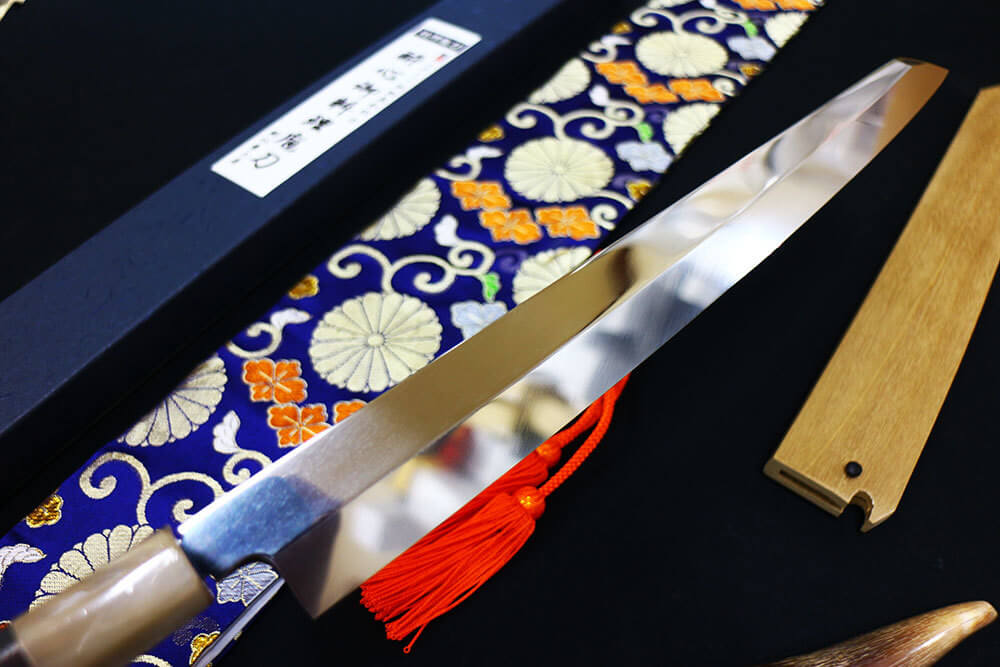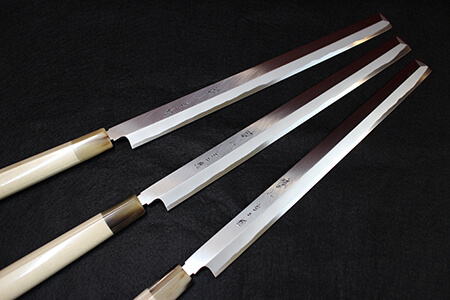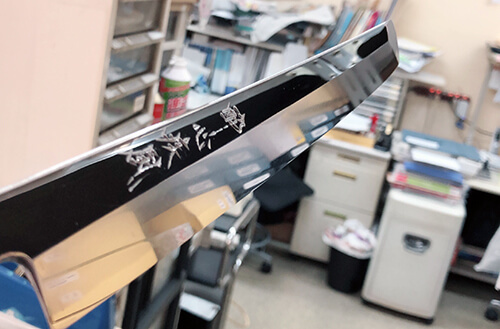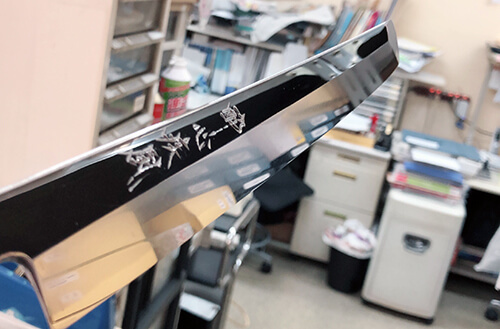Harder is better
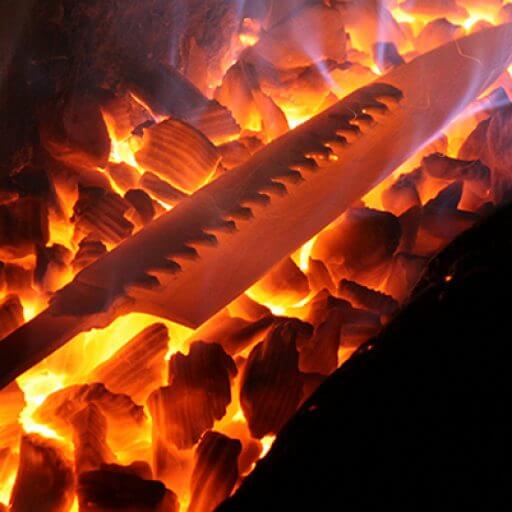
During the New Year, I had a chance to chat with my mom, and it seems she’s on the lookout for a good knife to give as a gift to a friend. I said, ‘How about an INOX Gyuto? It cuts well and is easy to sharpen, right?’
Mom replied, ‘True, it cuts well, but it’s made of softer steel, you know…’
Apparently, sharpening knives isn’t a big concern for homemakers (^^; When considering knives for professional use, the combo of cutting and sharpening matters, so having something easy to sharpen that also cuts well seems ideal. But my mom (or maybe just her?) doesn’t really think about sharpening. It’s a fact that harder steel doesn’t lose its edge as easily and maintains sharpness overall. While harder steel is more prone to chipping, it still retains the cutting ability in certain spots.
Sharpening intervals aren’t every other day, but rather once a month! And it dawned on me – that’s why household knives tend to be made of harder steel (^^)b. For those who can manage the sharpening process, using a professional knife at home gives a fantastic cutting experience. However, for those who don’t think about sharpening, a harder knife might be more suitable!
Prioritize longevity in cutting rather than just being able to cut well. When a hard knife loses its cutting ability, it’s often due to the edge rounding off. And trust me, sharpening this is quite a task… If there’s chipping, it takes time to fix that part… My mom said to me, ‘You’re a knife pro, so treat it like training and sharpen it for me!’
So, with these thoughts in mind, I pondered if I could incorporate this perspective into my professional life while sorting out the company’s inventory. Somehow, various interesting things came up, so there’s more to share another time!
hibishugyo
- 2007-01-05
